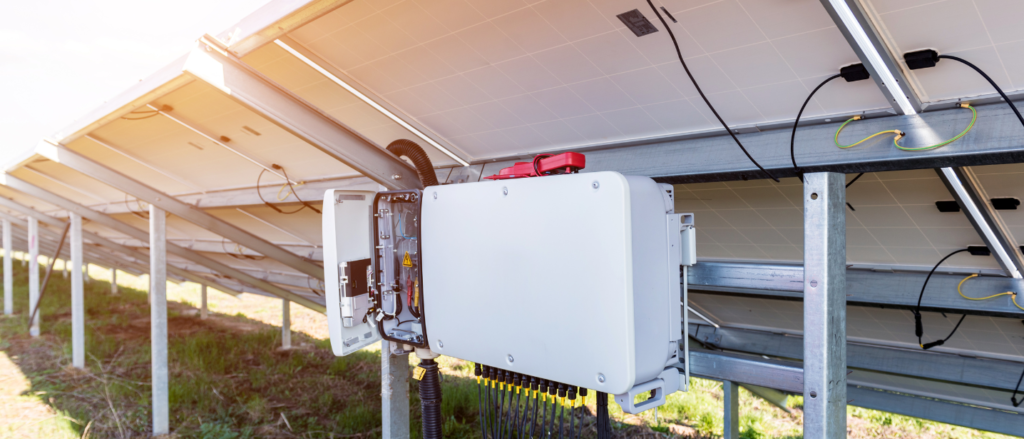Along with solar prices, solar companies are waiting for the dropping of the cost of solar home batteries, which offers them reasonable financial return. So, in this blog, we will cover all kinds of solar battery aspects and their pros/cons.
Working of Solar Battery: It’s very necessary to understand the concept of working of a solar system. Solar Panels generate power when the sun is shining, especially in the daytime, and are first used to supply energy to the property’s needs. The surplus energy is exported back to the grid. And it offers retailers FIT to buy energy back from the customer.
Or, as an alternative option, the surplus energy that is being exported to the grid can be used to change a battery. Then, the home battery storage system can be discharged in the evening to reduce the amount of power the owner needs to buy from the grid. The energy of the home battery storage system is stored in DC, and batteries can be connected to the main switchboard like in any AC application.
Benefits of Solar Batteries:
- The main is a financial benefit, i.e., reducing the amount of power one needs to buy from the grid. A standard residential solar system, without a battery, typically covers around 30% to 50% of a household’s power needs. However, when a solar battery is added to the system, it can increase the coverage to as much as 80%, 90%, or even 100% of the household’s power consumption. It’s important to consider that charging a battery means sacrificing some of the revenue generated from solar feed-in tariffs. Nonetheless, there’s still a clear benefit, as the rate you pay for buying electricity from the grid is typically much higher than what retailers offer for the excess electricity you feed back into the grid.
- Nowadays, solar batteries can take the capability of working in lights during power outages. But with some models of batteries, additional hardware is a must to enable the battery to provide power even in a blackout.
Especially for some Australians, due to soaring energy prices in mid-2022, we can see the need to increase the independence of the power network. - No matter how much energy solar panels generate, the majority of power generated on the grid is being done from some fossil fuels and or carbon-intensive sources. Although it is a great idea to install solar panels to reduce carbon footprints and, more importantly, to install solar batteries will double the reduction of the footprints.
- In recent times, Australia has witnessed the rise of various Virtual Power Plant programs. Under these programs, homeowners who participate allow the VPP operator to either discharge or charge their solar battery during moments when there’s an opportunity to profit in the wholesale or ancillary energy markets. In return for this occasional usage, which might occur only a few times a year, the VPP operator provides benefits to the homeowner.
These benefits can come in various forms, such as:
Offering a bonus feed-in tariff provides a high rate for the electricity that is used. Providing an annual fixed fee for participation.
Granting a discount on the installation of the battery.
Cost of Solar Battery:
Esteem Energy has been tracking and being in touch with the average cost of residential batteries and collected data from 200 solar installers. The cost is between $1000 -$ 1300 per kWh of capacity installed, depending on the brand, area, location, and size of the battery.

Solar Battery, ROI, Payback Period, and Savings:
Scenario of Energy Usage:
This is a typical approximate graph of peak energy usage in the morning with a total energy usage of 30 kWh per day. Assumption of 30 cents to be a flat rate per kWh and FIT to be 5 cents per kWh.

Solar and Battery Solutions:
Our analysis focused on the effects of a 6.6kW solar system paired with a 10kWh solar battery in a household consuming 30kWh of energy daily, as outlined in the graph above. When combined, this solar and battery system can supply 66% of the home’s energy needs, a significant increase compared to the 39% coverage provided by 6.6kWh solar panel system alone.
It’s noteworthy that the battery is fully recharged on 98.5% of days. Considering the substantial cost associated with batteries, our recommendation is to install a sufficient number of solar panels to achieve at least 80% utilization of the battery’s capacity.
Financial Return:

This is a table that summarizes an approximate outcome of the above scenario. The key takeaway of the payback period for solar batteries is 13 years. In the market, most solar batteries are only warranty for 5 to 10 years, so many solar batteries will not be able to pay during their lifetime.
Conclusion:
Based on our extensive analysis of various scenarios over the years, we have yet to encounter a situation where installing a residential battery offers a compelling financial return. Typically, the time it takes to recoup the investment in a solar battery exceeds the battery’s warranty period, even when considering additional advantages gained through participation in a Virtual Power Plant program.
As a result, the decision to install a solar panel battery is generally only justified when homeowners place value on factors such as blackout protection and reducing their carbon footprint.
In the past, Esteem Energy estimated that for residential solar batteries to provide an attractive return on investment, prices would need to drop to a range of $200 to $300 per kWh of battery capacity installed. However, the current market price is significantly higher, closer to $1,000 per kWh.

I was studying some of your blog posts on this internet site
and I conceive this web site is very instructive! Retain putting up.Blog monry